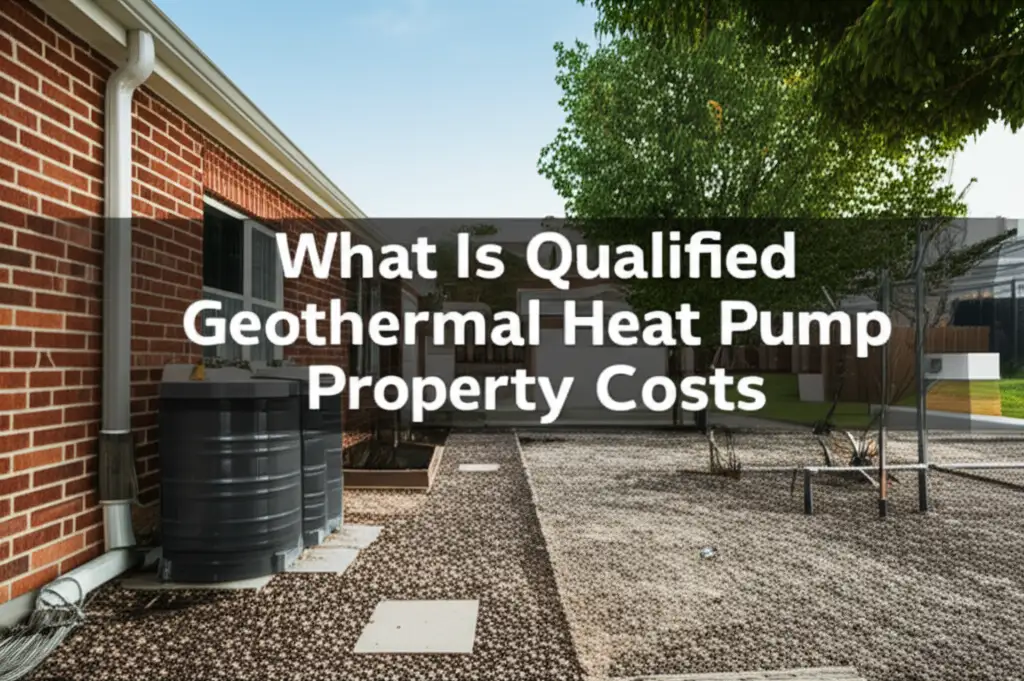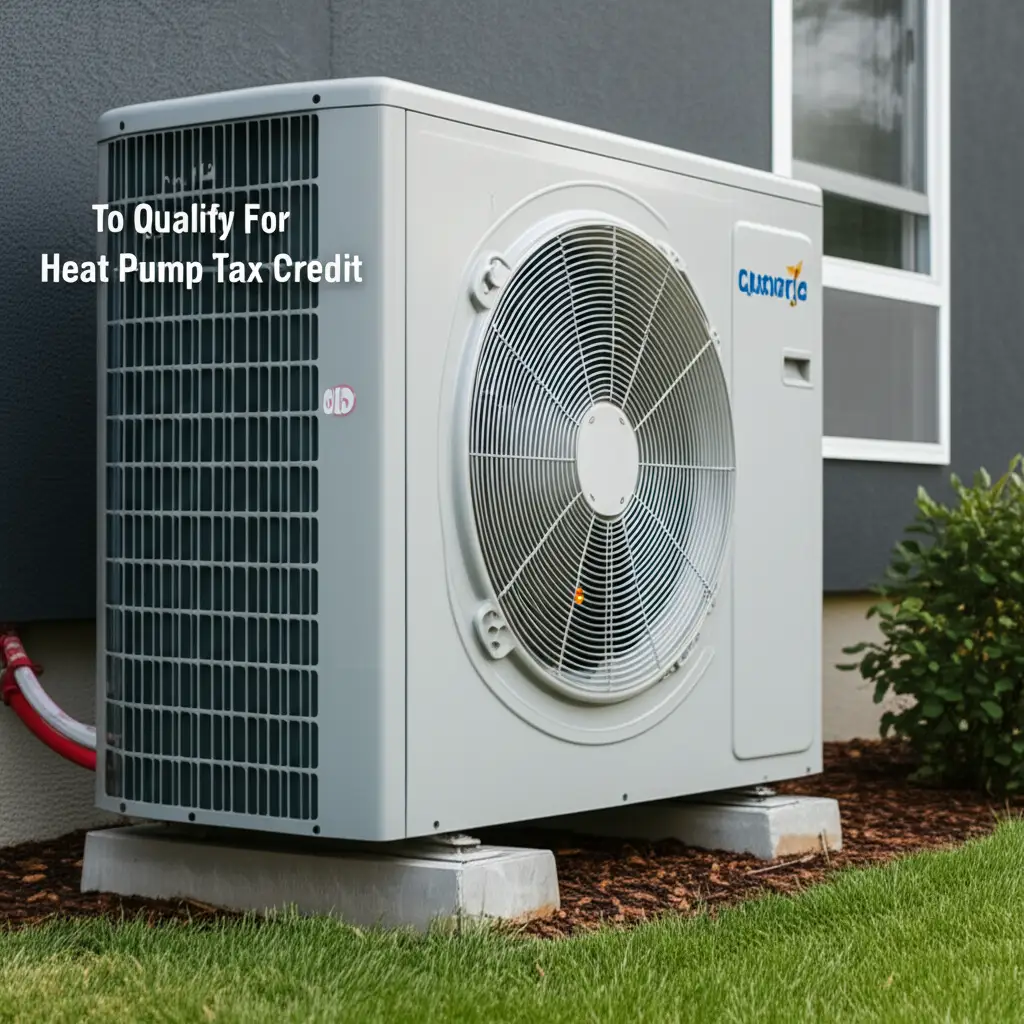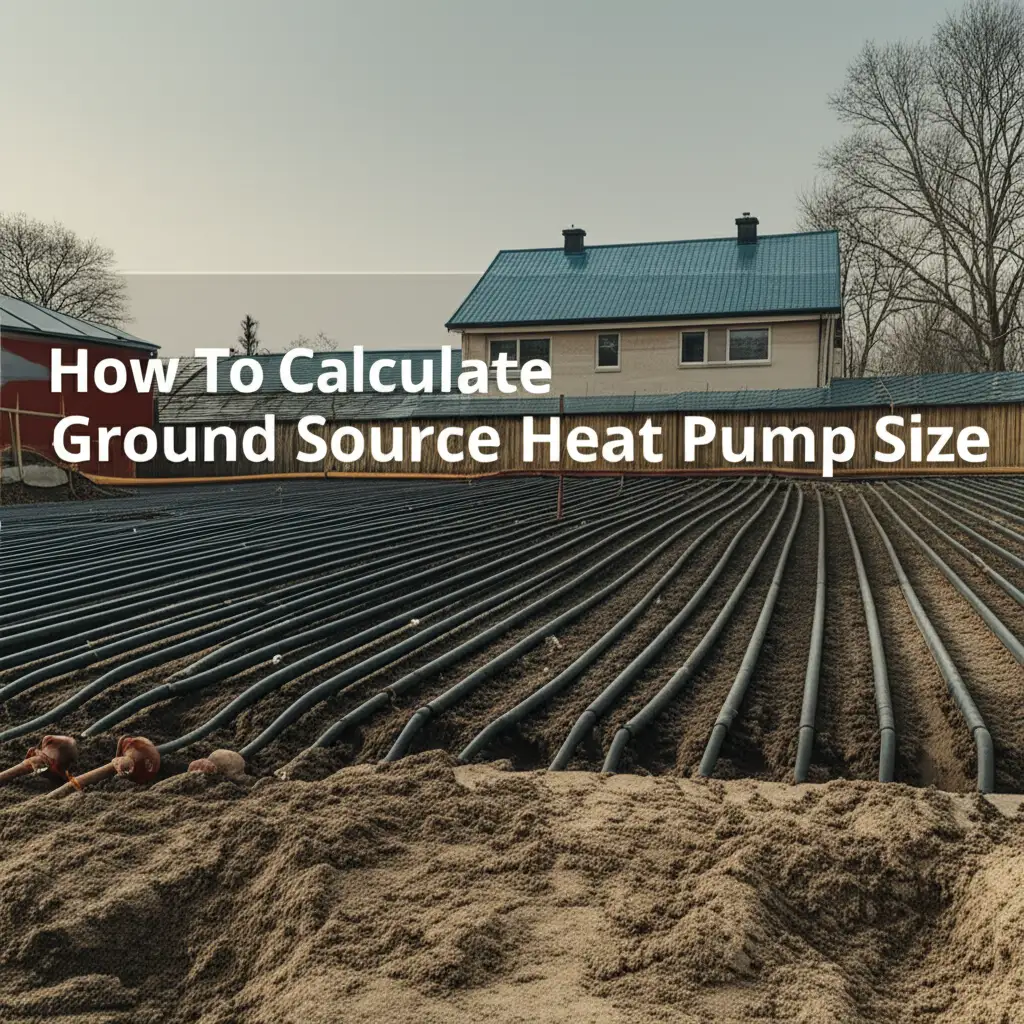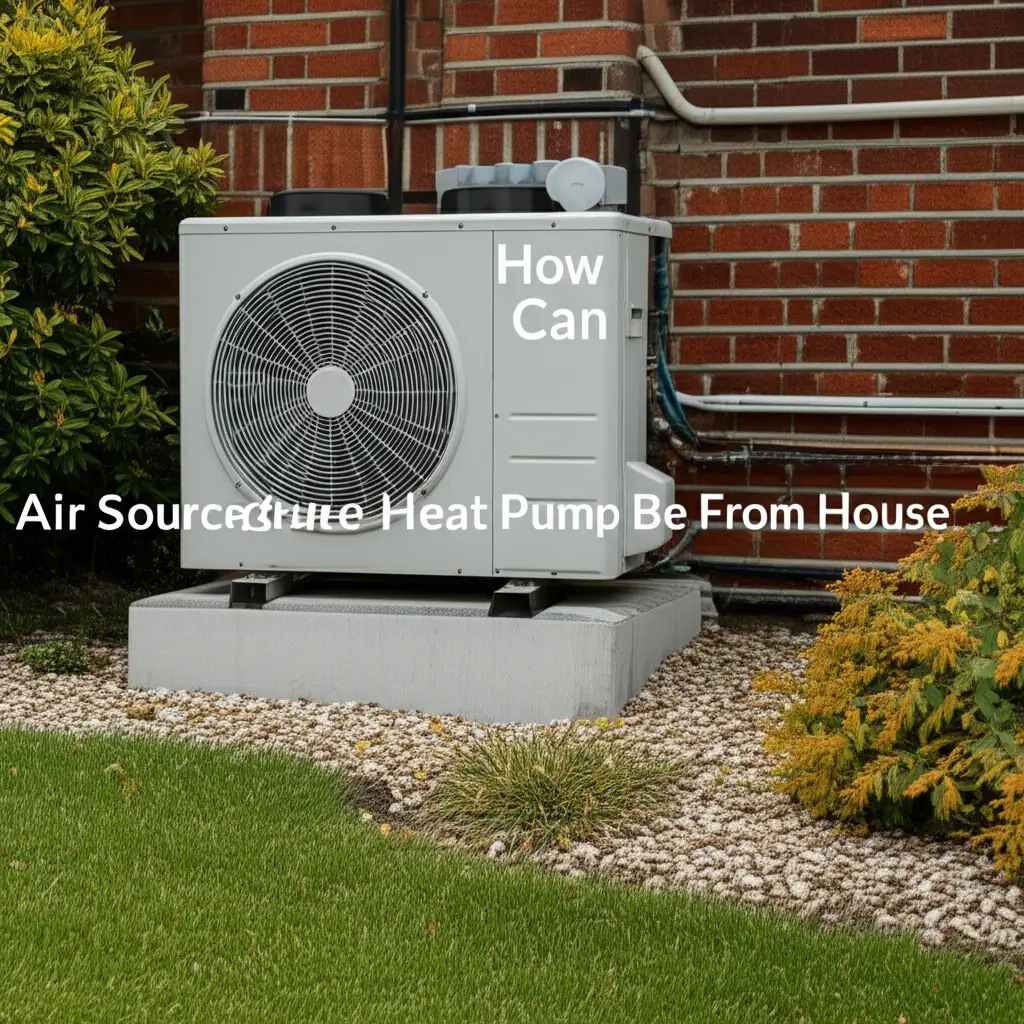· Katria Melrose · Energy Efficiency · 19 min read
What Is Qualified Geothermal Heat Pump Property Costs

Understanding Qualified Geothermal Heat Pump Costs
Are you thinking about installing a geothermal heat pump system in your home? This is a great step towards energy independence and lower utility bills. Geothermal systems tap into the earth’s stable temperature to heat and cool your living space efficiently. Many homeowners wonder about the upfront investment for such a system. The good news is, a significant portion of these expenses can qualify for valuable tax incentives. I want to help you understand what defines qualified geothermal heat pump property costs. Knowing these details helps you maximize your potential savings and make an informed decision about this sustainable energy solution.
Installing a geothermal system means investing in major home improvements. These systems offer long-term environmental and financial benefits. The federal government offers tax credits to encourage homeowners to adopt renewable energy technologies. These credits can reduce the overall cost of your system considerably. Let’s explore the specific costs that typically qualify, ensuring you know what to expect and how to claim your benefits.
Takeaway:
- Qualified geothermal heat pump costs include equipment and labor for installation.
- The federal residential energy credit can offset a significant portion of these expenses.
- Proper documentation and adherence to IRS guidelines are essential for claiming the credit.
Qualified geothermal heat pump property costs are expenses for purchasing and installing a geothermal heat pump system that meets specific energy efficiency standards. These costs typically include the equipment, labor for installation, and other components directly necessary for the system’s operation, making them eligible for federal tax credits.
Defining Qualified Geothermal Heat Pump Property Costs
When you install a geothermal heat pump, certain expenses qualify for federal tax credits. These are “qualified geothermal heat pump property costs.” These costs include the equipment itself and the labor to install it. The system must meet specific energy efficiency standards set by the Internal Revenue Service (IRS). This ensures that only high-performing systems receive the benefit.
The primary goal of these tax credits is to encourage homeowners to adopt renewable energy. Geothermal systems use the earth’s natural heat, making them a clean energy choice. The credit helps offset the initial investment. This makes geothermal technology more accessible to average families. Understanding these qualified costs helps you plan your budget.
What Components Are Covered?
Qualified costs cover the entire geothermal heat pump system. This means more than just the indoor unit. It includes the ground loop system, the heat pump unit, and all necessary connecting components. The ground loop system is a crucial part. It exchanges heat with the earth. The heat pump unit then transfers this heat to or from your home.
Think of it this way: if a part is essential for the geothermal system to function, it probably qualifies. This includes pipes, pumps, and drilling expenses. You also count any wiring or ductwork directly related to the geothermal system. It does not include costs for other appliances or general home renovations.
Meeting Energy Efficiency Standards
For your costs to qualify, the geothermal heat pump must meet specific energy efficiency requirements. The IRS outlines these standards. Manufacturers often label their products to indicate compliance. This makes it easier for you to choose the right system.
I always recommend checking the product specifications before purchase. You can also ask your installer for proof of certification. Systems that do not meet these standards will not qualify for the tax credit. This is important to remember when selecting your geothermal heat pump.
IRS Guidelines: What Expenses Qualify?
The IRS provides clear guidelines on what expenses qualify for the Residential Clean Energy Credit. This credit helps homeowners reduce the cost of installing renewable energy systems. Geothermal heat pumps fall under this category. The credit applies to both existing homes and new constructions.
My experience shows that understanding these rules early saves time and avoids headaches later. The credit is a direct reduction of your tax liability. It is not a refund, but it lowers the amount of tax you owe. If your credit exceeds your tax liability, you cannot carry the excess over to future tax years. This makes it different from some other energy credits.
Eligible Property and Components
The IRS defines “qualified geothermal heat pump property” quite broadly. It includes all equipment that uses geothermal energy to heat or cool a dwelling. It also covers heating water for use in the dwelling. This means the entire system is eligible.
Consider the following items when calculating your qualified costs:
- Heat Pump Unit: This is the core component that transfers heat.
- Ground Loop System: The underground pipes that circulate fluid to exchange heat with the earth.
- Drilling Costs: Expenses for drilling the boreholes needed for the ground loops.
- Pumps and Controls: Any pumps, valves, or control systems specific to the geothermal operation.
- Connecting Piping and Wiring: All piping and wiring that connect the ground loop to the indoor unit.
- Distribution System Modifications: Changes to your home’s existing ductwork or hydronic piping if directly required by the geothermal installation.
These components ensure the geothermal system operates effectively. Each piece contributes to the overall energy efficiency of your home. You can learn more about what a geothermal heat pump is and how it works to better understand these components.
What Expenses Do Not Qualify?
While many costs are covered, some expenses do not qualify for the credit. General home improvements not directly related to the geothermal system are not eligible. For instance, replacing windows or upgrading insulation typically does not qualify under this specific credit, even if done at the same time.
Also, ongoing maintenance costs or repairs to an existing system are not included. The credit is for the initial installation of a new, qualified system. It does not cover the cost of a non-qualified system that simply heats or cools your home. Ensure your system meets the energy efficiency criteria before you install it.
Eligible Components of a Geothermal System
A geothermal heat pump system is a complete package. It relies on several key components working together. Understanding these parts helps you identify all eligible costs for your tax credit. Each piece plays a vital role in transferring the earth’s energy into your home. This makes them essential to the “qualified property” definition.
I find it helpful to think about the system in two main parts: the outdoor ground loop and the indoor heat pump unit. Both are necessary for the system to function. They both contribute to the overall efficiency of your home’s heating and cooling. How does geothermal heat pump residential technology work explains the interplay of these parts.
The Ground Loop System
The ground loop system is perhaps the most significant part of a geothermal installation. These are pipes buried in the ground, either horizontally or vertically. A fluid circulates through these pipes, absorbing or releasing heat with the earth. The costs associated with installing this loop are fully qualified expenses.
This includes:
- Piping Material: The actual pipes (usually high-density polyethylene) that form the loop.
- Excavation and Drilling: The labor and equipment costs for digging trenches or drilling boreholes. This can be a substantial part of the overall cost due to the nature of the work.
- Grouting and Backfill: Materials used to seal the boreholes and backfill the trenches.
- Fluid: The water or antifreeze solution that circulates through the loops.
These underground components are critical. Without them, the heat pump has no way to exchange energy with the earth. They represent a significant portion of the total investment.
The Geothermal Heat Pump Unit
The indoor geothermal heat pump unit is the heart of the system. This unit processes the heat from the ground loop and distributes it throughout your home. It works much like a conventional heat pump but uses the earth as its heat source or sink.
Qualified costs related to the indoor unit include:
- The Heat Pump Itself: The actual piece of equipment that handles heat transfer.
- Ductwork Modifications: If your existing ductwork needs modifications to work with the geothermal system, these costs may qualify. This is especially true if the modifications are specific to the new system’s requirements.
- Pumps and Valves: Circulating pumps that move the fluid, and any necessary valves for system control.
- Control Systems: Thermostats and control panels that manage the geothermal unit’s operation.
- Electrical Wiring: Any new electrical wiring needed specifically for the heat pump unit.
These components ensure the efficient distribution of heating and cooling. Understanding what geothermal heat pump energy is used for can help you see how these parts contribute to the overall energy solution. Every part of the system that contributes to its primary function, whether heating or cooling, is generally considered a qualified expense.
Beyond Equipment: Understanding Installation Labor Costs
The total cost of a geothermal heat pump system is not just about the equipment. The installation labor is a significant portion of the investment. Many homeowners overlook the extent to which labor costs factor into the overall project. The good news is, qualified geothermal heat pump property costs include these labor charges. This covers everything from the initial site preparation to the final system commissioning.
I have found that understanding the breakdown of labor costs helps in budgeting. It also emphasizes the importance of hiring experienced professionals. Proper installation ensures your system performs efficiently and safely. Mistakes in installation can lead to higher operating costs or system failures.
What Labor Qualifies?
The labor costs that qualify for the tax credit are those directly related to the on-site preparation and installation of the geothermal system. This includes a wide range of activities. These activities are essential for the system to function correctly.
Qualified labor costs typically include:
- Site Survey and Planning: Initial assessment of your property for optimal ground loop placement.
- Drilling and Excavation: Labor for digging trenches or drilling boreholes for the ground loops. This is often the most intensive part of the installation process.
- Ground Loop Installation: Placing the pipes into the ground and connecting them.
- Indoor Unit Placement: Setting up the heat pump unit inside your home.
- Plumbing and Electrical Connections: Connecting the ground loops to the heat pump and running electrical lines.
- Ductwork Modifications: Adjusting or installing new ductwork if required for proper airflow with the geothermal system.
- System Testing and Commissioning: Ensuring the system operates correctly and efficiently after installation.
- Waste Removal: Disposing of debris generated during the installation process.
Every one of these steps is vital. They ensure the system integrates seamlessly with your home. When you get quotes, ask for a detailed breakdown of labor charges. This will help you identify what specifically qualifies.
Importance of Professional Installation
Choosing a certified and experienced installer is crucial. Geothermal heat pump installation is not a DIY project. It requires specialized knowledge and equipment. Professionals understand local geology, drilling techniques, and system sizing. They also ensure compliance with building codes and environmental regulations.
A well-installed system will provide maximum efficiency and a long lifespan. It also ensures you meet the criteria for the federal tax credit. I always recommend getting multiple quotes. Check references and verify certifications before making a decision. Poor installation can lead to energy waste and higher maintenance costs.
Understanding the Federal Residential Energy Credit for Geothermal
The federal Residential Clean Energy Credit is a powerful incentive for homeowners. It helps make renewable energy systems, including geothermal heat pumps, more affordable. This credit is a percentage of your qualified expenses. It directly reduces the income tax you owe. The percentage can change over time, so it’s vital to know the current rates.
I find this credit to be one of the most compelling reasons to choose geothermal. It significantly offsets the initial investment. This makes the long-term savings even more attractive. Let’s look at how this credit works specifically for geothermal heat pump installations.
Current Tax Credit Rates
As of recent legislation, the Residential Clean Energy Credit offers a substantial benefit for geothermal systems. It covers a significant percentage of the cost of new, qualified clean energy property for your home. This credit is often referred to as the “geothermal tax credit.”
The current rate is 30% of the cost of new, qualified clean energy property for your home. This rate applies to systems installed through the end of 2032. After that, the credit percentage begins to decrease:
- 30% for systems placed in service from 2022 to 2032.
- 26% for systems placed in service in 2033.
- 22% for systems placed in service in 2034.
There is no maximum credit limit for geothermal heat pumps under this program. This means you can get 30% back on the total qualified cost, no matter how large the investment. This makes high-efficiency systems even more appealing.
How to Claim the Credit
Claiming the federal tax credit is relatively straightforward. You will use IRS Form 5695, Residential Energy Credits. This form is filed with your federal income tax return. You will need to keep good records of all your qualified expenses.
Here are the basic steps to claim your credit:
- Purchase and Install: Buy and install a qualified geothermal heat pump system. Ensure it meets the energy efficiency standards.
- Keep Records: Collect all receipts and invoices for equipment and installation labor. Make sure these documents clearly show the qualified expenses.
- Complete Form 5695: Fill out IRS Form 5695. You will enter your total qualified geothermal property costs on this form.
- File with Tax Return: Submit Form 5695 along with your annual federal income tax return (Form 1040).
The credit applies to the year the property is “placed in service.” This usually means when the installation is complete and the system is ready to use. I recommend consulting with a tax professional. They can help ensure you correctly calculate and claim your credit. They can also advise on any state or local incentives that might stack with the federal credit.
Certification and Standards for Qualified Geothermal Systems
For your geothermal heat pump system to be eligible for tax credits, it must meet specific certification and efficiency standards. These standards ensure the system is genuinely energy-efficient and contributes to reducing energy consumption. The government does not want to provide incentives for less effective technology. Therefore, manufacturers must design and test their products to meet certain benchmarks.
I believe this focus on standards benefits everyone. It protects consumers by ensuring quality. It also promotes the development of better, more efficient geothermal technology. Knowing these standards helps you choose a system that definitely qualifies.
Key Efficiency Metrics
Geothermal heat pumps are evaluated based on several efficiency metrics. These metrics quantify how well the system converts energy into heating or cooling. The two primary metrics for geothermal systems are:
- Energy Efficiency Ratio (EER): This measures cooling efficiency. A higher EER indicates more efficient cooling.
- Coefficient of Performance (COP): This measures heating efficiency. A higher COP indicates more efficient heating.
For the federal tax credit, a geothermal heat pump must meet or exceed specific EER and COP ratings. These ratings vary slightly depending on the system type (e.g., closed-loop, open-loop, direct expansion) and climate region. The precise requirements are often based on Energy Star certification or similar programs. You can find detailed requirements on the IRS website or through the Department of Energy.
Energy Star Certification
Many qualified geothermal heat pumps carry the Energy Star label. This certification means the product meets strict energy efficiency guidelines set by the U.S. Environmental Protection Agency (EPA) and the U.S. Department of Energy. The Energy Star program helps consumers identify energy-efficient products easily.
If a geothermal heat pump has an Energy Star label, it likely meets the federal tax credit requirements. However, it’s always good practice to double-check the specific EER and COP ratings against the current IRS guidelines. Manufacturers typically provide this information in their product specifications. Your installer should also be able to confirm that the system they propose meets all necessary standards. This verification helps you avoid any surprises when claiming your credit.
Maximizing Your Savings: Combining Credits and Rebates
Investing in a geothermal heat pump is a smart financial move over the long term. Beyond the federal tax credit, there are often other ways to save money. Many states, local governments, and even utility companies offer additional incentives. These can come in the form of rebates, grants, or other tax credits. Combining these different programs can significantly reduce your out-of-pocket costs.
I always tell homeowners to research all available incentives. Missing out on a local rebate could mean leaving money on the table. Maximizing your savings makes the transition to clean energy even more appealing. It also helps speed up your return on investment.
State and Local Incentives
State and local governments often have their own programs to encourage renewable energy adoption. These incentives vary widely depending on where you live. They might include:
- State Tax Credits: Similar to the federal credit, but at the state level.
- Property Tax Exemptions: Some areas offer exemptions or abatements on property taxes for homes with renewable energy systems.
- Grants: Direct financial assistance that does not need to be repaid. These are often competitive or for specific income levels.
- Loan Programs: Low-interest loans or favorable financing terms for energy-efficient upgrades.
To find out what’s available in your area, I recommend checking your state energy office website. The Database of State Incentives for Renewables & Efficiency (DSIRE) is also an excellent resource. It provides a comprehensive list of incentives across the country.
Utility Company Rebates
Many utility companies offer rebates to their customers who install energy-efficient appliances and systems. Geothermal heat pumps are frequently included in these programs. Utility companies benefit from reduced demand on their grids. They pass some of these savings back to consumers as an incentive.
Utility rebates can be a flat amount or based on the system’s size or efficiency. It’s wise to contact your electricity or natural gas provider directly. Ask them about any energy efficiency programs or rebates they offer for geothermal installations. Sometimes, you need to apply for these rebates before installation. Make sure you understand their specific requirements and application processes. Combining a utility rebate with the federal tax credit can lead to impressive overall savings on your qualified geothermal heat pump property costs.
Long-Term Benefits of Geothermal Investment
While the initial qualified geothermal heat pump property costs can seem high, the long-term benefits are substantial. Geothermal systems are an investment in your home’s future. They provide reliable, efficient heating and cooling for decades. The financial advantages extend far beyond the initial tax credits and rebates.
I often think of geothermal as a gift that keeps on giving. It provides comfort and significant savings year after year. These systems are designed for durability and minimal maintenance. This contributes to their overall value. The return on investment often outweighs the upfront expense over the system’s lifespan.
Reduced Energy Bills
The most significant long-term benefit is dramatically lower energy bills. Geothermal heat pumps are incredibly efficient. They do not burn fossil fuels to create heat. Instead, they simply move heat between your home and the earth. This process requires much less electricity than traditional heating and cooling methods.
Many homeowners report reducing their heating and cooling costs by 25% to 70%. These savings accumulate significantly over the system’s long operational life. The consistent performance of geothermal systems, even in extreme weather conditions, ensures stable energy costs. For example, how does geothermal heat pump work in winter highlights its efficiency in cold climates. This stability protects you from fluctuating fossil fuel prices.
Increased Home Value
Installing a geothermal system can increase your property’s value. Homebuyers are increasingly looking for energy-efficient features. A geothermal heat pump signals lower operating costs and a commitment to sustainability. This can be a significant selling point if you decide to move.
Real estate appraisals often consider energy-efficient upgrades. An appraiser might factor in the long-term energy savings. This translates to a higher valuation for your home. It means you can potentially recoup some of your initial investment when you sell the property.
Environmental Impact and Sustainability
Choosing geothermal is a powerful statement about sustainability. Geothermal systems produce almost no greenhouse gas emissions on-site. They reduce your carbon footprint significantly. By using a renewable energy source, you contribute to a cleaner environment.
This environmental benefit offers a sense of pride and responsibility. It aligns your home with global efforts to combat climate change. Beyond the financial returns, the positive impact on the planet is a valuable, intangible benefit. It makes your home part of the solution for a sustainable future.
FAQ Section
What exactly makes geothermal heat pump costs “qualified”?
Qualified costs cover the purchase and installation of a geothermal heat pump system that meets specific federal energy efficiency standards. This includes the equipment itself, like the heat pump unit and ground loop, and all labor costs for drilling, trenching, and connecting the system. These expenses qualify for the federal Residential Clean Energy Credit.
Does the federal tax credit cover a geothermal system for a new home construction?
Yes, the federal Residential Clean Energy Credit applies to qualified geothermal heat pump property installed in both existing homes and new constructions. This means if you are building a new house, the costs associated with adding a geothermal system can still be eligible for the credit, provided it meets all the necessary efficiency criteria.
Are ongoing maintenance costs for my geothermal system tax deductible?
No, the federal tax credit for geothermal heat pumps is for the initial installation costs of a new, qualified system. It does not cover ongoing maintenance, repairs, or replacement parts for an existing system. The credit focuses on encouraging the adoption of new renewable energy technologies.
Is there a maximum limit to the geothermal tax credit amount?
For geothermal heat pump systems, there is currently no maximum dollar limit on the federal Residential Clean Energy Credit. You can claim 30% of the total qualified costs through the end of 2032. This makes it a very generous incentive for homeowners considering this renewable energy solution.
What documents do I need to claim the geothermal tax credit?
You will need invoices and receipts detailing all qualified geothermal heat pump property costs, including equipment and installation labor. It is also wise to have documentation proving the system meets the required energy efficiency standards, such as Energy Star certifications. You will use this information to complete IRS Form 5695.
Can I combine the federal geothermal tax credit with state or local incentives?
Yes, you can often combine the federal Residential Clean Energy Credit with state, local, or utility company incentives. These can include state tax credits, property tax exemptions, rebates, or grants. Researching all available programs in your area can significantly increase your overall savings on a geothermal installation.
Conclusion
Understanding qualified geothermal heat pump property costs is key to unlocking significant savings for your home. We have explored what defines these eligible expenses, from the heat pump unit and ground loops to crucial labor for drilling and installation. These costs, coupled with the generous federal Residential Clean Energy Credit, make geothermal energy a more accessible and financially appealing choice for homeowners.
I encourage you to consider this sustainable heating and cooling solution. The benefits of lower energy bills, increased home value, and a reduced carbon footprint are compelling. Do your research, gather detailed quotes, and consult with a tax professional to ensure you maximize your tax credit and any available state or local incentives. Investing in a geothermal heat pump is an investment in your home’s future and our planet’s well-being. Take the next step toward energy independence and comfort today.
- geothermal tax credit
- qualified energy property
- heat pump installation costs
- renewable energy tax credit
- home energy savings





